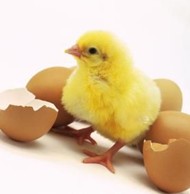Assisted Hatching
IVF Fertility Treatment: Improving Embryos Chance Of Survival
![]()
Assisted Hatching |
 |
Assisted Hatching For IVFContents • What Is Assisted Hatching? |
|
Related Articles: IVF Guide Infertility Guide |
What Is Assisted Hatching?
It is a new technique used to help embryos implant in the womb. The majority of fertility clinics do hatching on at least some embryos during an IVF procedure. Assisting hatching is done on the morning of embryo transfer. The embryologist (doctor specializing in working with embryos), takes a needle with acid on the end and touches the shell on the embryo. This creates a hole which allows the embryo to break through the hard shell (called the zona pellucida) and attach to the womb.
Think of it like breaking the shell on a chicken egg so that the chicken can make its way out more easily. Embryos that are created in a lab are thought to have harder zonas than those created naturally, so this procedure gives them a head start in the hope they will break out and settle down in the womb. Many clinics are now performing Laser Assisted Hatching. Instead of using a needle, a laser is used to drill a hole in the zona. This method is faster, safer and simpler to perform.
Originally it was only done on embryos who had a thicker zona than normal, or on embryos from women aged over 37. Now some clinics do embryo hatching on most of their embryos. Although, some still only routinely perform it on some patients or embryos that were frozen and thawed. Current research indicates that this treatment does not raise the risk of birth defects in babies born using it. As only the outer shell of the embryo is affected by the procedure, the embryo remains untouched and unharmed. There are some indications it could raise the risk of having twins (though many of course consider this a benefit!). Will It Improve My Chance Of Pregnancy? According to NICE (National Institute for Health and Clinical Excellence, UK) guidelines:
How Much Does Assisted Hatching Cost? The cost of hatching varies between $400 and $1,000 - laser hatching is more expensive than manual (using a needle) hatching because of the technology involved. Of course, you will need to add all the other costs of IVF to this to get a complete picture of how much it will cost you take a baby home. Study Results: Laser-Assisted Hatching of Embryos in Older Women After IVF In 2002, Department of Obstetrics and Gynecology in Chang Gung Memorial Hospital, Taipei carried out a study on a group of infertile women age over 37 who had numerous failed IVF cycles. The women were divided into two groups. In group 1, their embryos were transferred without laser assisted hatching (LAH), and group 2 the embryos were examined and treated with LAH. The results of the study failed to show any significant difference in the improved plantation or pregnancy rate between the two groups (0.6 percent improvement only). Researchers speculated that pregnancy outcome in older women is more likely to be influenced by a number of other factors including thickness of the womb lining (endometrial priming), egg (oocyte) quality, ovarian reserves and response to gonadotropins infertility drugs. |
| Related Articles on In Vitro Fertilization
For more IVF treatments, see the following: • Ovarian stimulation: Increasing your egg output! Back To Homepage: Womens Health Advice |
WOMENS HEALTH ADVICE: ABOUT In Vitro Fertilization |